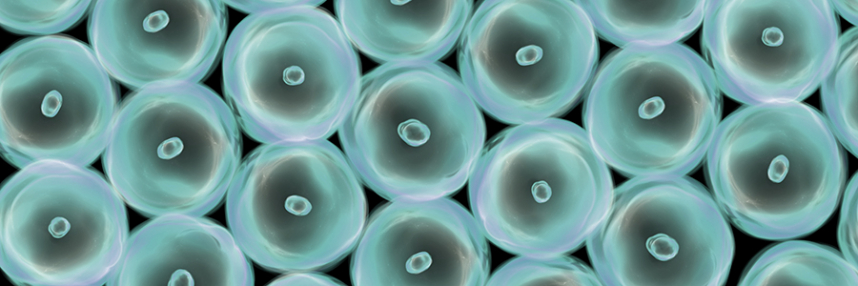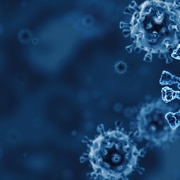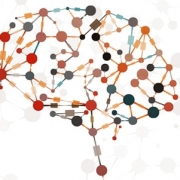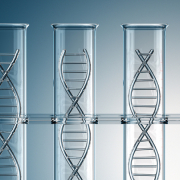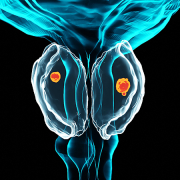Genomes, microbiomes and mitochondria
Making sense of the fantastical and complex world of cells, their impact on health and potential discoveries from further research
The average human has over 100 trillion microbes in and on their body, making cell composition 90% microbial. In the midst of this new genomic era of human disease and treatment, mitochondria and microbiomes are now at the heart of current cutting-edge medical research, shedding light on the intricate workings of our cells and their impact on our health. “As a result, the clinical implications are becoming clearer”, says Professor Alain Li Wan Po.
Reshaping Bergerac’s fiction into facts
“Perhaps our flesh, our blood and our beings are nothing but a network of little animals holding together, lending us movement with theirs, and, blindly allowing our will to drive them like a coachman, while driving us too, and all together produce that action we call life.” – Savinien de Cyrano de Bergerac (17th Century writer).
17th Century France was still grappling with making sense of the Copernican universe, with the sun at the centre, when Bergerac imagined his fantastical world of what he dubbed ‘imperceptible organisms’; either too big to see in detail for being too close, or conversely, too small to see at all with the naked eye. As a free-thinker and satirist, he had to be careful what he said: censors armed with metaphorical and real guillotines were all too ready to chop texts and necks alike. A censored version of his work was eventually published posthumously by a lawyer-friend turned priest.
It is a measure of the progress of science since Bergerac’s days, and of how close he was to the truth, that our current concerns and research include the ethics of transplanting mitochondria (sub-cellular energy-generating structures) and the development of optimal methods for faecal transplantation as therapy for severe and potentially fatal diseases such as intractable diarrhoea. Our human cells make up only about 10% of cells in our body. The rest, made up by our microbiome (the populations of microbes that inhabit our bodies), also defines us so well that there are even concerns about potential loss of privacy when it is subject to genetic profiling. Both mitochondria and microbiomes are the subjects of current cutting-edge medical research that is reshaping Bergerac’s fiction into facts. As a result, the clinical implications are also becoming clearer.
The greater contribution of the mother
With increasing appreciation of the roles of human mitochondria and microbiomes, the concept of inheritance and the meaning of ‘congenital’ (inherited or present from birth) are being recast. That most of our cells actually contain two distinct genomes – the nuclear and the mitochondrial – is now discussed in some detail even in the most elementary genetics textbooks. Similarly, human inheritance of microbial ‘metagenomes’, and their impact on health and disease are increasingly discussed. While the father and the mother contribute equally to the nuclear genome of their child, the mitochondrial genome that is passed on is essentially maternal in origin, because the mitochondria of the sperm are eliminated at fertilisation. Moreover, our microbiome is also largely maternally inherited by exposure to the mother’s microbiome during birth; or perhaps even earlier, as recent work has identified a placental microbiome. The microbiome we inherit is certainly influenced by whether we are born naturally or through a caesarean section. Furthermore, cultural variations in diet also contribute to defining our microbiome.
Translational implications
Recently published papers in leading medical and scientific journals demonstrate how wide the clinical implications of the microbiome and mitochondrial genome are. Diet and antibiotic therapy alter our microbiome, and such alterations in turn alter how we process ingested food and how our immune system functions. Obesity, malnutrition, enhanced susceptibility to infection, inflammatory diseases, and even adverse effects of drugs are increasingly well-evidenced outcomes of such disturbances. Links are also being established between microbiomes and a wide range of clinical problems, including colon cancer, drug resistance, and various autoimmune diseases.
We know that impaired mitochondrial function can be lethal; hence in the new technique of healthy mitochondrial transfer as part of IVF for women who carry mitochondrial DNA (mtDNA) variations associated with severe disease. Unlike the nuclear genome, DNA repair mechanisms are few for the mitochondrial genome, and so it is not surprising that, in addition to causing severe disease, mitochondrial dysfunction is also being increasingly associated with age-related diseases. For example, recent research has provided some insight into why a minority of patients with essential tremor progress to Parkinson’s disease. The accumulation of mutations in mtDNA over a lifetime, combined with the gradual shortening of chromosome ends (telomeres) effectively forms an hourglass clock that defines the lifespan of our cells and governs ageing.
Our mitochondria may also affect us in less obvious ways, for example, by modulating our immune system. Available evidence suggests that mitochondrial mismatch increases the risk of rejection of stem-cell transplants.
Dead wrong
Two and a half centuries after Bergerac, Paul Portier of the Oceanographic Institute in France, proposed that without the intracellular ‘organoids’ he saw, to generate energy, life would be impossible. Followers of Pasteur were very much against this new theory. In England, an anonymous reviewer, writing in the journal Nature, commented condescendingly that Portier’s book contained:
“A lively exposition of a heresy …The heresy is that apart from bacteria, all organisms are double being formed by the association… of two different kinds of creature… We have no hesitation in prophesying that his theory will be shown to be of no value, which is just what he would have said himself a few years ago. We are bound to admit that the author is a downright good sportsman.” Thanks to modern genomics, we now know that the reviewer was wrong; mitochondria originate from independent microbial organisms ’captured’ eons ago in more complex cells.
In 1657, Bergerac went further, imagining that our world is only one among an infinite number within an infinite living universe. In 1974, perhaps inspired by Bergerac, Lewis Thomas, an ex-President of Memorial Sloan-Kettering Cancer Centre in New York, likened the world to a complex cell, enrobed by ‘the toughest membrane imaginable in the universe’. Just as the universe holds secrets we have yet to discover, we continue to learn about the intricate workings of our cells in health and disease.
Professor Alain Li Wan Po is editor-in-chief of the Journal of Clinical Pharmacy and Therapeutics, and is a fellow of the Royal Pharmaceutical Society and the Royal Statistical Society.
–


